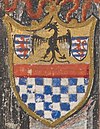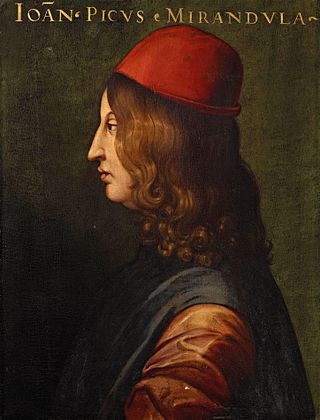
Giovanni Pico dei conti della Mirandola e della Concordia, known as Pico della Mirandola, was an Italian Renaissance nobleman and philosopher. He is famed for the events of 1486, when, at the age of 23, he proposed to defend 900 theses on religion, philosophy, natural philosophy, and magic against all comers, for which he wrote the Oration on the Dignity of Man, which has been called the "Manifesto of the Renaissance", and a key text of Renaissance humanism and of what has been called the "Hermetic Reformation". He was the founder of the tradition of Christian Kabbalah, a key tenet of early modern Western esotericism. The 900 Theses was the first printed book to be universally banned by the Church. Pico is sometimes seen as a proto-Protestant, because his 900 theses anticipated many Protestant views.

Virginia de' Medici was an Italian princess, a member of the House of Medici and by marriage Duchess of Modena and Reggio.

Giovanni Francesco Pico della Mirandola (1470–1533) was an Italian nobleman and philosopher, the nephew of Giovanni Pico della Mirandola. His name is typically truncated as Gianfrancesco Pico della Mirandola.

Niccolò III d'Este was Marquess of Ferrara from 1393 until his death. He was also a condottiero.

The Lordship, then County, Principality and finally Duchy of Mirandola was a state which existed in Northern Italy from 1310 until 1711, centered in Mirandola in what is now the province of Modena, in Emilia-Romagna, and ruled by the House of Pico.
Giovanni I Pico was an Italian nobleman and condottiero. He was lord of Mirandola and Concordia from 1399 until his death.

Galeotto II Pico della Mirandola, lord of Mirandola, was an Italian condottiere.
The Mirandola witch trials took place in Mirandola in the Duchy of Mirandola between 1522 and 1525. It resulted in the death of ten people, who were burned alive at the stake for witchcraft on the square.
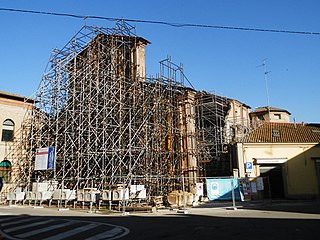
The church of San Francesco is a church located in Mirandola, in the province of Modena, Italy.

The Mirandola mint, also known as the mint of the Pico della Mirandola, was the mint of the Duchy of Mirandola.
Alessandro Pico della Mirandola, known under the pseudonym Abate Pico della Mirandola, was an Italian nobleman and politician, and the last male descendant of the Pico della Mirandola lineage.

Francesco Maria Pico, also known as Francesco Maria II Pico della Mirandola to distinguish him from his father, was an Italian nobleman, third Duke of Mirandola and fourth Marquis of Concordia.
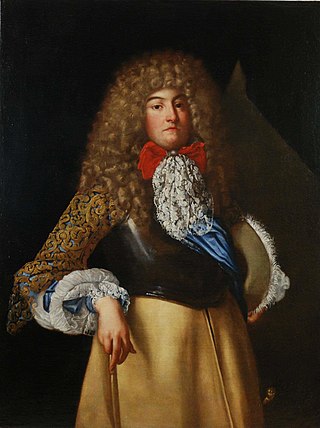
Alessandro II Pico della Mirandola was an Italian nobleman, soldier and patron of the arts, second Duke of Mirandola and third Marquis of Concordia from 1637 until his death.
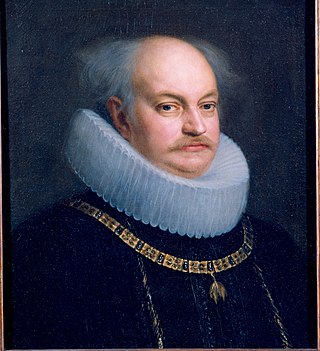
Alessandro I Pico della Mirandola was an Italian nobleman and military man, second Marquis of Concordia (1602–1637), second and last Prince of Mirandola (1602–1617) and first Duke of Mirandola (1617–1637).

Brigida Pico della Mirandola was an Italian noblewoman, Princess Regent of Mirandola and Concordia for fifteen years, in the name and on behalf of her nephew Francesco Maria II Pico della Mirandola, whose grandfather was her brother Alessandro II Pico della Mirandola. She ruled despotically with a policy that led to the fall of the Duchy of Mirandola.
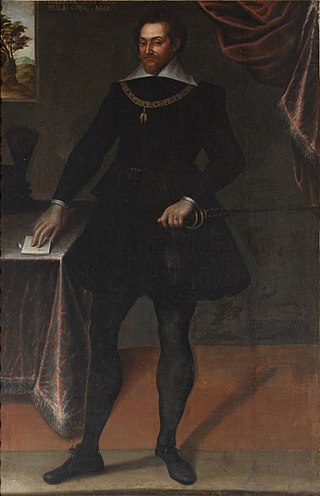
Federico II Pico della Mirandola was an Italian nobleman, last Count of Mirandola and Concordia (1592-1596) and first Prince of Mirandola and Marquis of Concordia (1596-1602).
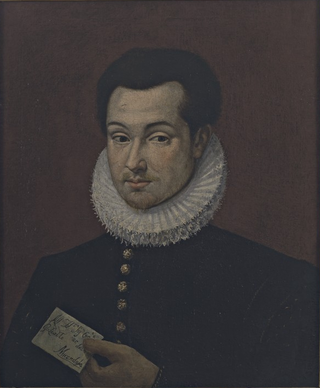
Galeotto III Pico della Mirandola was an Italian nobleman, third Count of Mirandola and Concordia from 1568 to 1592, the year of his abdication due to health problems in favour of his brother Federico II Pico della Mirandola.

The siege of Mirandolain 1321, also known as the siege of Duke Passerino, was a military conflict involving Francesco I Pico, first lord of Mirandola, against Rinaldo dei Bonacolsi, better known as Duke Passerino, lord of Mantua.
Francesco II Pico della Mirandola was an Italian condottiero and nobleman, belonging to the House of Pico, who in 1354 regained the family domains of Mirandola and Concordia, which had fallen into the hands of the Gonzagas, and was lord of them until his death (1399).
The siege of Mirandola in 1502 was a military conflict involving Giovanni Francesco II Pico della Mirandola against his younger brothers Federico and Ludovico, who bombarded Mirandola for 50 days. Defeated and imprisoned, Francesco II was released only with the promise of cession of the dominions, then retiring into exile for eight years.

